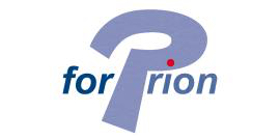FORPRION
BAVARIAN RESEARCH ASSOCIATION PRIONS

LMU 17 TSE in fish
Field of work:
Epidemiology and Veterinary medicineThe presence of the normal cellular isoform of the prion protein is an absolute requirement for prion replication. In the past, economically grown fish species were exposed to prions causing bovine spongiform encephalopathy (BSE), and scrapie in cattle, and sheep respectively, through feeding with contaminated meat and bone meal (MBM). It was, however, unknown whether fish genomes encode a homologue of the mammalian prion protein or, in other words, whether fish could theoretically be susceptible to prion infections. We initially investigated whether fish fulfil the basic precondition of amplifying PrPres: Do fish genomes harbour a gene encoding for a prion protein. We initially identified two distinct cDNAs coding for homologues to mammalian tetrapod prion protein in Japanese pufferfish (Fugu rubripes) and one in Atlantic Salmon (Salmo salar) (Oidtmann et al. 2003) and subsequently identified further cDNA sequences in other fish species (zebrafish, common carp, stickleback, and rainbow trout) (Maddison et al. 2005, Rivera-Milla, Oidtmann et al. 2006 and unpublished results). In all species investigated to date, we have been able to identify cDNAs for two prion protein genes. Since the ray fin fish line diverted from the common ancestors of mammals, birds and reptiles, ray fin fish have undergone a genome duplication event. This genome duplication event explains why two PrP genes can be found in fish, compared to only one in mammals. A further genome duplication event has been identified in some salmonid and cyprinid species. This additional genome duplication could mean that in such species 4 instead of 2 PrP genes could be present. Very recently, a third PrP gene has been annotated in the zebrafish genome, proving this hypothesis. Investigation of PrP expression in various tissues has revealed similar patterns for PrP1 in Atlantic salmon and rainbow trout compared to expression patterns found in mammals. High levels of expression are seen in brain, medium level expression in heart muscle tissue and gill, and relatively low expression in muscle tissue. We have also investigated expression of carp PrP2 mRNA. Expression patterns were markedly different from those in salmonid PrP1s: Expression levels in muscle tissue were at the same level as in brain. This suggests that PrP2s may be expressed at high levels in muscle. We are presently in the process of comparing expression levels of PrP1s and 2s in Atlantic salmon, rainbow trout and common carp using Real-time PCR. We are presently generating monoclonal antibodies against Rainbow Trout Prion protein 2, which are likely to also detect to Atlantic Salmon PrP2. These mABs will be used to investigate protein expression in various tissues, and will be used to detect whether salmonid PrP can be converted into the proteinase K resistant form by in vitro conversion. Our research team is currently consulted by the European Food Safety Authority (EFSA). We are members of the Working Group on the assessment of the health risks of feeding ruminants with fishmeal in relation to the risk of TSE, which is currently preparing a report for the European Parliament and the European Commission. The outputs of our project have been internationally recognised and feed directly into recommendations to the EU. As a conclusion from the consultation, EFSA recognises that further research is still required to fill still existing knowledge gaps. Due to staff changes, this project has suffered from delays. We are presently progressing on investigations into PrP expression profiles and generation of mABs for the detection of duplicated fish PrPs. We are intending to undertake in vitro conversion experiments next year. We are therefore close to generating conclusive results, which will allow to assess the risk of using fish protein in ruminant diets and the potential risks arising from such practice for human health.



